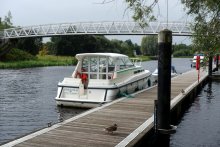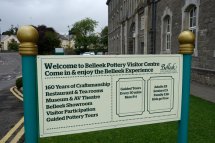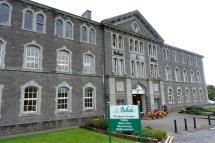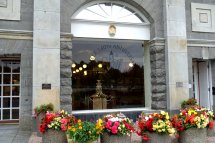Round The World and other travels
A frequent flyer's collection of trip diaries
This is: Round Ireland (2016-20)
An enjoyable short visit to Northern Ireland
I spent part of the morning having a look around Sligo on foot. As with my previous overnight stop, Galway City, I didn't find it hugely inspiring. The west of Ireland is rightly celebrated for its stunning coastline and beautiful countryside, not for its towns and cities. In around ninety minutes, I managed to cover the riverside area and Yeats memorial building, the Church of Ireland cathedral (locked up!), the Roman Catholic cathedral (reasonably attractive), and the ruins of Sligo Abbey (genuinely interesting).
 |
 |
 |
 |
 |
 |
 |
 |
 |
 |
LEFT and ABOVE: A morning walk around the centre of Sligo |
 |
| RIGHT and BELOW: The ruins of Sligo Abbey | |||||
 |
 |
 |
 |
 |
 |
I then embarked, a little earlier than planned, on a circular drive that would involve spending a few hours in Northern Ireland, the area in the northeast of the island of Ireland (comprising six counties) that is one of the constituent parts of the UK. (The term 'United Kingdom', originally a contraction of 'United Kingdom of Great Britain and Ireland', was coined following the Acts of Union of Great Britain and Ireland in 1801. It later came to mean 'United Kingdom of Great Britain and Northern Ireland', after secession of the Irish Free State in 1922.) Northern Ireland is the only part of the UK with an external land border, a fact that has recently been brought into sharp focus by the whole 'Brexit' controversy. Today's visit would take in Enniskillen and Belleek; a longer visit to NI will come in the final part of my coastal journey round Ireland.
My first priority on arrival in Enniskillen was getting parked - it's a busy, popular place! - and the second was to avail myself of a coffee-shop lunch. Despite only having been away from home for less than a week, it somehow felt strange to be using Sterling again, rather than Euros. With the notable exception of the castle, nearly all of the interesting buildings appeared to be situated on the town's 'main street', variously known as Townhall Street, Church Street and Darling Street. Starting at the eastern end, the town hall had an imposing appearance due in no small part to its striking (no pun intended) clock tower. Proceeding westwards, I next came to St Macartin's Church of Ireland Cathedral, which had a most attractive internal appearance, largely thanks to the bright, but tasteful paintwork. Also of interest was the investment in TV monitors, which suggested a high attendance rate. Almost directly across the street was St Michael's, a Roman Catholic parish church. Although this church had no special status, it was absolutely huge. Like its Anglican neighbour, it also had an attractive interior.
| RIGHT: Enniskillen Town Hall and St Macartin's Cathedral (C of I) |
 |
 |
 |
 |
 |
 |
 |
 |
 |
 |
LEFT: St Michael's RC Church, an unusual look for the Methodists and one of the nicer commercial properties |
However the star of the show in Enniskillen, in my view, was rather more worldly in nature. Enniskillen Castle, situated next to the River Erne and with a history stretching back over six centuries, made for a fascinating and enjoyable visit. Both the county museum and the military museum proved to be very interesting and featured well presented displays - a really excellent job!
 |
 |
 |
 |
 |
 |
 |
 |
 |
Next, I made the 25-mile drive along the shore of Lower Lough Erne to the village of Belleek, which is mostly in Co. Fermanagh (NI), but partly in Co. Donegal (RoI). The border-straddling village is best known for the Belleek Pottery, which I knew of through watching various antique shows on TV. I joined a guided tour, which proved to be an enjoyable and interesting experience.
 |
 |
 |
|||
 |
 |
 |
 |
 |
 |
Given Belleek's situation, it came as no surprise that almost all of my drive back to Sligo was in the Republic, so it was back to the equally comfortable world of traffic lights with no red+amber phase, New World-style road signs based on yellow diamonds, Stop signs and Yield instructions. This evening's dinner was based in the Glasshouse's impressive restaurant, and provided an opportunity to ponder further on my afternoon visit to Northern Ireland, a province that has had a deeply troubled history during much of my lifetime. The abiding memory from today, however, was of the particularly friendly and welcoming local people that I encountered there.
 |